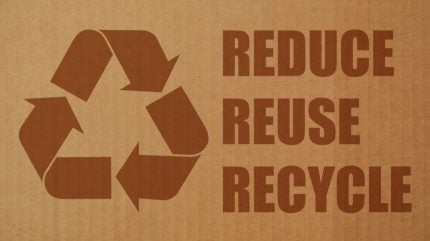
As sustainability continues to dominate conversations across industries, the packaging sector is embracing innovation like never before. From eco-friendly packaging to biodegradable materials, brands are exploring ways to reduce environmental impact while maintaining functionality.
With the growing consumer demand for environmentally responsible products, packaging companies are now focusing on developing solutions that promote a circular economy, improve recyclability, and reduce waste. I
n 2024, several emerging trends are reshaping how companies package their goods, offering a glimpse into a more sustainable future.
Eco-friendly packaging: the future of consumer goods
Sustainable packaging has become a priority for businesses and consumers alike. Companies are actively investing in biodegradable materials and recyclable packaging to mitigate the environmental impact of traditional plastic packaging.
Materials like plant-based plastics, paperboard, and compostable biopolymers are now seen as viable alternatives to fossil fuel-derived products.
A major innovation in this space is the development of bioplastics, which are made from renewable sources such as corn starch and sugarcane. Bioplastics can decompose under specific conditions, offering a promising solution to the global plastic waste crisis.
These materials, when used for temperature-sensitive packaging, are also being adapted for industries such as food and pharmaceuticals, ensuring the products remain protected while keeping the carbon footprint low.
Moreover, companies are implementing recyclable packaging solutions that aim to make recycling simpler and more effective.
In many cases, brands are adopting minimalist designs and reducing unnecessary components, making packaging easier to disassemble and recycle at the end of its life cycle.
Circular economy in packaging: closing the loop
A key concept driving change in the industry is the circular economy, which prioritises waste reduction through the continuous use of resources.
Unlike the traditional linear model, which involves creating products, using them, and discarding them, the circular economy promotes reusing and recycling materials.
This approach is transforming how packaging is designed, with companies focusing on developing products that can be reused, repaired, or recycled, thus minimising waste.
One example is the rise of smart packaging that integrates technology to optimise the product’s lifecycle. Packaging equipped with sensors can monitor a product’s condition and relay information about when and how the packaging should be recycled or reused.
This extends the product’s life, reduces unnecessary waste, and enhances consumer engagement by providing detailed information about recycling processes.
Another innovation shaping the circular economy is intelligent packaging, which ensures that materials are recycled efficiently and that the same packaging components are used multiple times without losing quality.
By incorporating tracking technologies, manufacturers can manage the recycling process more effectively, ensuring materials circulate within the economy instead of ending up in landfills.
Regulatory pressures and the drive for recyclability
In 2024, the packaging industry faces increasing regulatory pressure to reduce waste and improve sustainability.
Governments worldwide are introducing stricter guidelines to control plastic waste, and companies must comply with new packaging laws or risk financial penalties.
In response, businesses are focusing on packaging regulations that promote recyclable packaging and ban the use of certain single-use plastics.
These regulations have driven the adoption of sustainable packaging materials such as cardboard, paper, and biodegradable plastics, which are easier to recycle or compost.
For example, the UK has introduced new Extended Producer Responsibility (EPR) laws that place the responsibility for waste management on manufacturers.
Companies are now required to fund the cost of recycling and disposing of the packaging they produce. This shift has motivated brands to develop packaging that is not only environmentally friendly but also cost-effective to recycle.
Smart packaging: enhancing sustainability with technology
Technology is playing an increasingly important role in the packaging industry’s shift towards sustainability.
Smart packaging solutions are enabling manufacturers to monitor product integrity throughout the supply chain, ensuring that products are kept in optimal conditions, thereby reducing food waste and other losses.
For instance, temperature-sensitive packaging solutions are crucial for industries such as pharmaceuticals and food, where the integrity of the product can be compromised if exposed to unsuitable conditions.
By integrating sensors and tracking devices, smart packaging can detect temperature changes, moisture levels, and even tampering, allowing companies to take proactive measures to maintain product quality.
This reduces the risk of spoilage or damage, ensuring that fewer products are wasted, which contributes to a lower environmental impact.
Moreover, intelligent packaging enhances the recyclability of materials. As packaging becomes more sophisticated, companies can integrate tracking systems to ensure that packaging components are recycled correctly.
This not only improves the efficiency of the recycling process but also ensures that valuable materials are recovered and reused within the supply chain.
The takeaway
The packaging industry is undergoing a revolution driven by the need for sustainable packaging, bioplastics, and recyclable materials.
In 2024, innovations in smart packaging, intelligent packaging, and temperature-sensitive packaging are enabling companies to meet regulatory demands and satisfy environmentally conscious consumers.
As businesses continue to embrace the principles of the circular economy, the industry is moving closer to a future where packaging waste is dramatically reduced, and sustainability is at the forefront of product design.
These developments signal a promising future where packaging is not only functional but also a key contributor to global environmental goals.
By embracing these trends, packaging companies are not only helping protect the planet but also securing their place in a rapidly evolving market.




